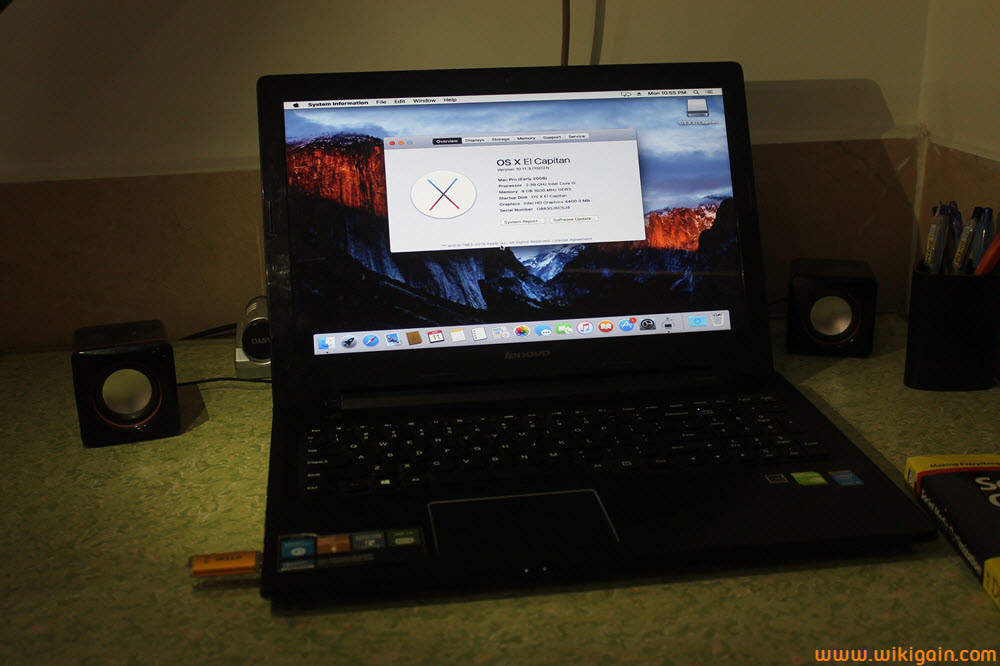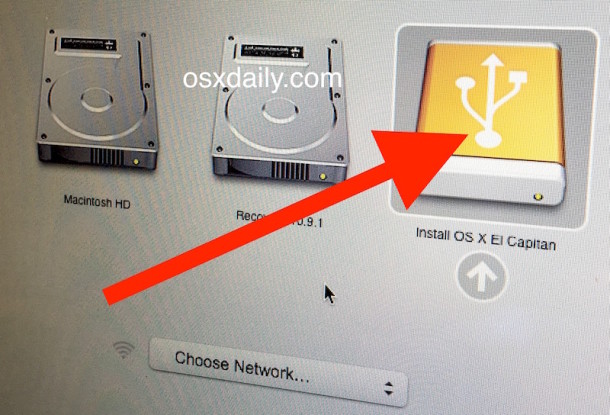- Installing El Capitan From Usb
- How Do I Install El Capitan On An Old Mac
- Installing El Capitan On Older Mac Os
Start up from macOS Recovery
- Aug 03, 2021 Features Of Mac OS X El Capitan System Integrity Protection. How to Perform a Clean Install of OS X El Capitan. OS X El Capitan (OS X 10.11) offers two installation methods. This guide focuses on the 'clean install' method. When you install El Capitan on your current startup drive with the clean install method, you erase everything on the drive.
- The latest software makes your Mac device compatible with the new technological developments. Still, it also makes the existing OS obsolete. That's why most Mac users with old devices try to update their Mac to OS X El Capitan. However, you can't update your Mac to El Capitan 10.11 if your Mac runs on software later than Mac OS X 10.6 Snow Leopard.
If you’ve never had El Capitan on this Mac, the first thing to do is visit the Mac App Store, download El Capitan (it’s free), and install it. Once you’ve done that, here’s how to install, reinstall, or upgrade to El Capitan, step by step: Boot from your Recovery HD partition by restarting your Mac while holding down the Command+R keys. Don't want to install El Capitan on a Mac you're restoring? Here's how you can install an older OS. Mac 911 By Glenn Fleishman, Senior Contributor Dec 3, 2015 8:00 pm PST. This video is about how to upgrade an old system to a better system on mac, for old mac's like 2008, 2009, 2010, 2011, 2012. We choose El Capitan OS X becau.
Determine whether you're using a Mac with Apple silicon, then follow the appropriate steps:
Apple silicon
Turn on your Mac and continue to press and hold the power button until you see the startup options window. Click the gear icon labeled Options, then click Continue.
Intel processor
Make sure that your Mac has a connection to the internet. Then turn on your Mac and immediately press and hold Command (⌘)-R until you see an Apple logo or other image.

If you're asked to select a user you know the password for, select the user, click Next, then enter their administrator password.
Reinstall macOS
Select Reinstall macOS from the utilities window in macOS Recovery, then click Continue and follow the onscreen instructions.
Follow these guidelines during installation:

- If the installer asks to unlock your disk, enter the password you use to log in to your Mac.
- If the installer doesn't see your disk, or it says that it can't install on your computer or volume, you might need to erase your disk first.
- If the installer offers you the choice between installing on Macintosh HD or Macintosh HD - Data, choose Macintosh HD.
- Allow installation to complete without putting your Mac to sleep or closing its lid. Your Mac might restart and show a progress bar several times, and the screen might be empty for minutes at a time.

After installation is complete, your Mac might restart to a setup assistant. If you're selling, trading in, or giving away your Mac, press Command-Q to quit the assistant without completing setup. Then click Shut Down. When the new owner starts up the Mac, they can use their own information to complete setup.

Other macOS installation options
When you install macOS from Recovery, you get the current version of the most recently installed macOS, with some exceptions:
- On an Intel-based Mac: If you use Shift-Option-Command-R during startup, you're offered the macOS that came with your Mac, or the closest version still available. If you use Option-Command-R during startup, in most cases you're offered the latest macOS that is compatible with your Mac. Otherwise you're offered the macOS that came with your Mac, or the closest version still available.
- If the Mac logic board was just replaced, you may be offered only the latest macOS that is compatible with your Mac. If you just erased your entire startup disk, you may be offered only the macOS that came with your Mac, or the closest version still available.
You can also use these methods to install macOS, if the macOS is compatible with your Mac:
- Use the App Store to download and install the latest macOS.
- Use the App Store or a web browser to download and install an earlier macOS.
- Use a USB flash drive or other secondary volume to create a bootable installer.
Patrick Atis securely wiped his drive, and then wanted to reinstall Yosemite, the installer for which he has on an external hard drive. However, after he booted into OS X Recovery (holding down Command-R at startup), he was only offered the option to download OS X through the App Store, and Yosemite wasn’t an option. What path could he take forward?
Recovery will reinstall the same version of OS X that was on your Mac, even though it’s been erased. Patrick should therefore be prompted to install Yosemite. That didn’t happen in his case. With an erased 2009 MacBook Pro, as Patrick has, he can’t use Internet Recovery, which will reinstall the original operating system that came with the Mac. If that had worked, you could install that older OS, then copy the Yosemite installer, and use it to upgrade, although an intermediate OS X installation might even be required.
Installing El Capitan From Usb
Since this isn’t working for Patrick, the better course is to create on another Mac a bootable Yosemite installer following Dan Frakes’ instructions. Gta san andreas euro truck simulator mods. Patrick has the Yosemite installer, but if you need an older installer, you can launch App Store on a Mac and then use the Purchased tab to scroll down and find older releases—they don’t show up by searching.
How Do I Install El Capitan On An Old Mac
Ask Mac 911
Installing El Capitan On Older Mac Os
We’re always looking for problems to solve! Email yours to mac911@macworld.com including screen captures as appropriate. Mac 911 cannot reply to email with troubleshooting advice nor can we publish answers to every question.